Floor-to-ceiling windows aren’t just for luxury homes anymore—they are becoming common for modern homeowners in 2025. Your windows should add value, not just look nice. Picking the wrong style can waste thousands of dollars.
Many homeowners struggle to choose windows that stay stylish and increase property value. You want modern designs that impress buyers but don’t cost too much or look old in a few years.
This guide shows 15 top window trends used by architects and interior designers today. You’ll see clear costs, installation tips, and real examples to help you make smart choices. No guessing—just ideas that work.

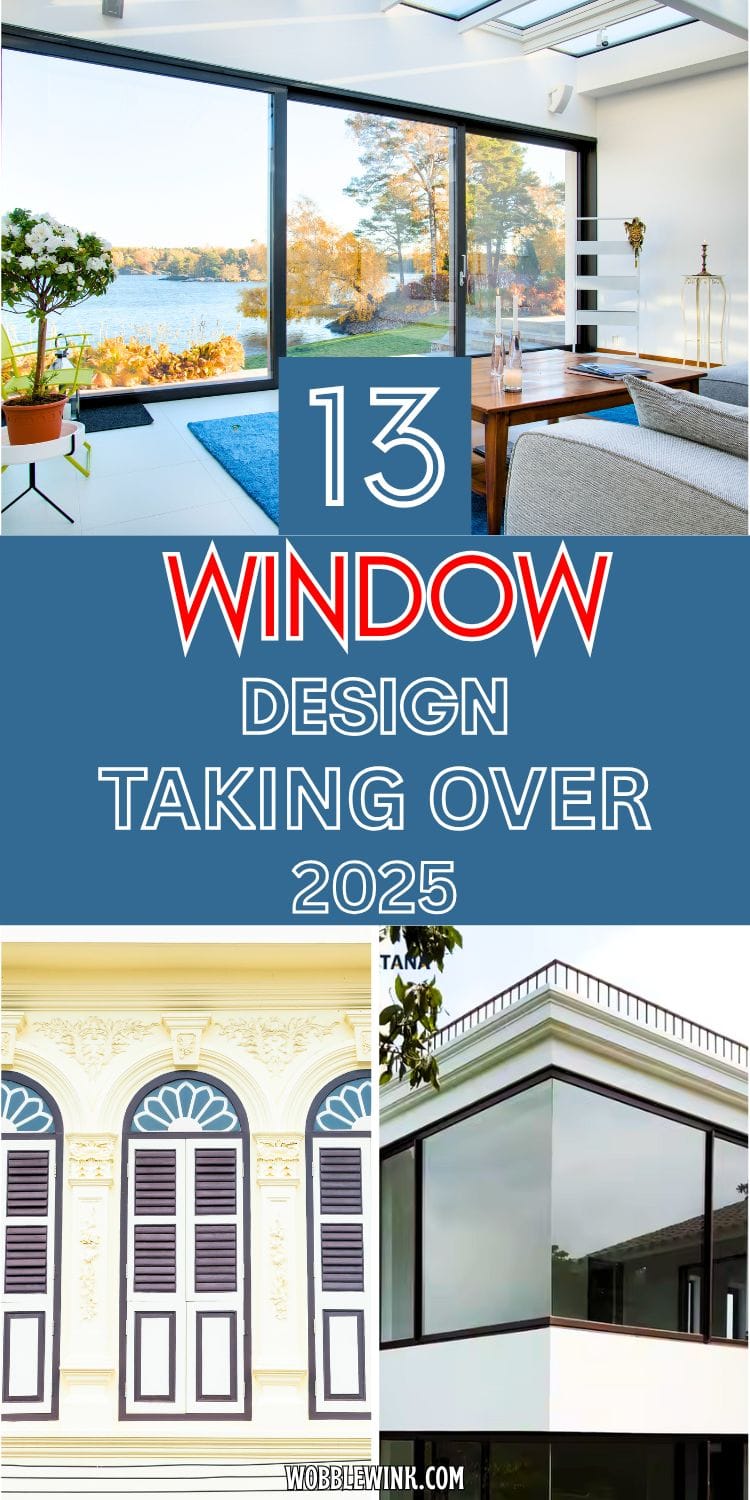
Are you ready to upgrade your home with windows that truly make a difference?
1- Smart Glass Windows: The Future is Here (And It’s Getting Cheaper)
Your windows could be working harder for you. Smart glass changes from clear to frosted with the flip of a switch. No more ugly blinds or curtains.
The technology uses electricity to control tiny particles in the glass. When power flows through, the glass turns opaque. Turn it off, and it’s clear again. Think of it like a dimmer switch for privacy.
Smart glass windows cut energy costs by 20-30% compared to regular windows. They block heat in summer and keep warmth inside during winter. The smart glass market is growing 15.8% each year through 2025.
These windows cost $50-100 per square foot installed. A typical bedroom window runs $2,000-4,000. You’ll save $200-400 yearly on energy bills. That means payback in 8-12 years.
Smart glass works best in bedrooms, bathrooms, and home offices. You get instant privacy without window treatments. Plus, they connect to your phone or smart home system.
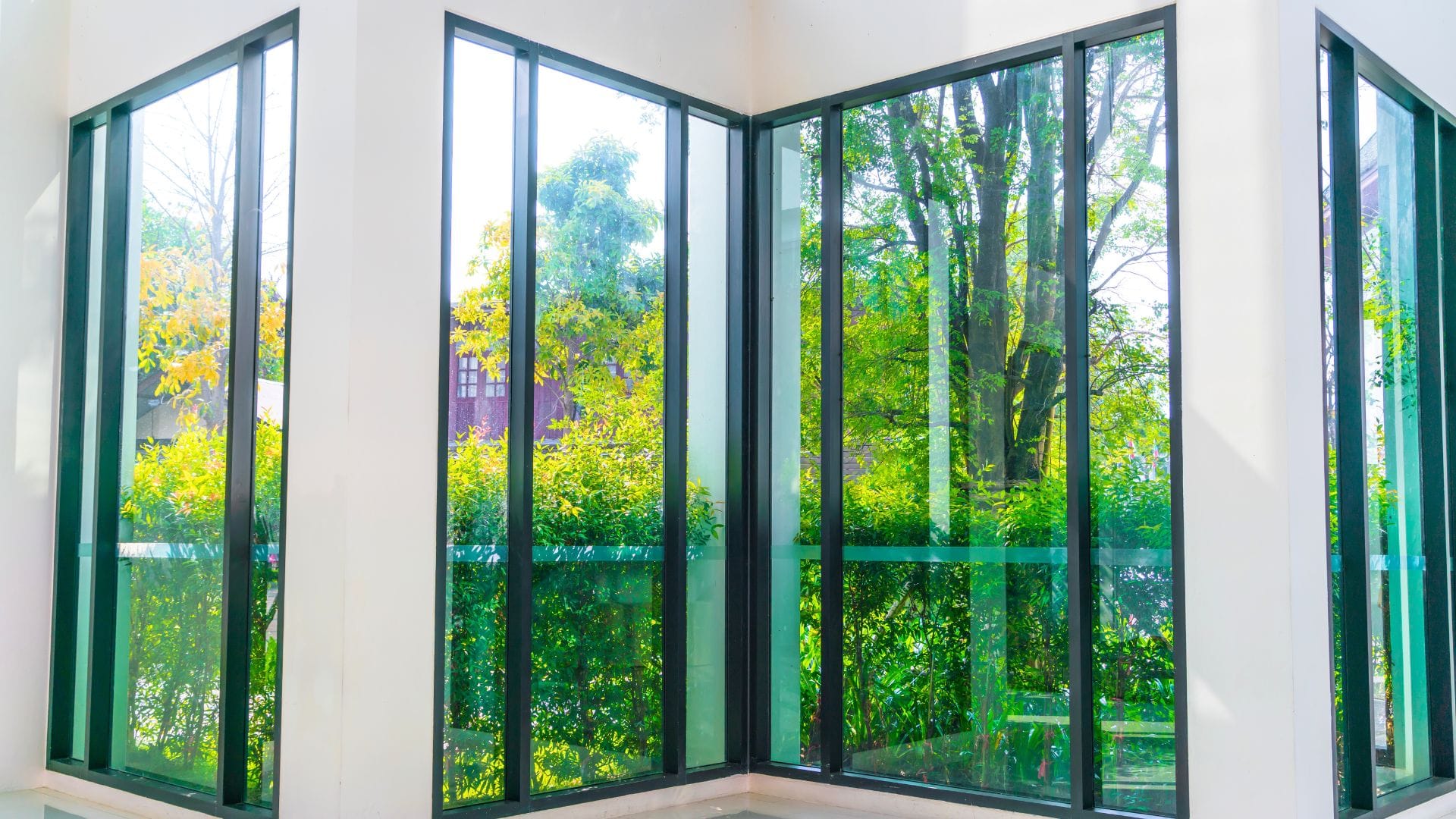
2- Black Window Frames: The New Neutral That Actually Works
White window frames make your home look like every other house on the block. Black frames create instant curb appeal without trying too hard. They’re the new neutral that works with any color scheme.
Black window frames look amazing on modern farmhouse, contemporary, and mid-century homes. They make white siding pop and add drama to brick or stone exteriors. Even traditional homes get a fresh update with black frames.
Inside your home, black frames act like picture frames for your views. They make rooms feel bigger and more expensive. Black goes with everything – white walls, wood trim, or colorful decor.
Here’s the downside: black frames show water spots and fingerprints more than white ones. You’ll need to clean them twice as often to keep them looking sharp.
Cost-wise, black frames typically run 10-15% more than white vinyl frames. But they’re the same price as white aluminum or wood frames. The upgrade fee is usually $200-500 per window.
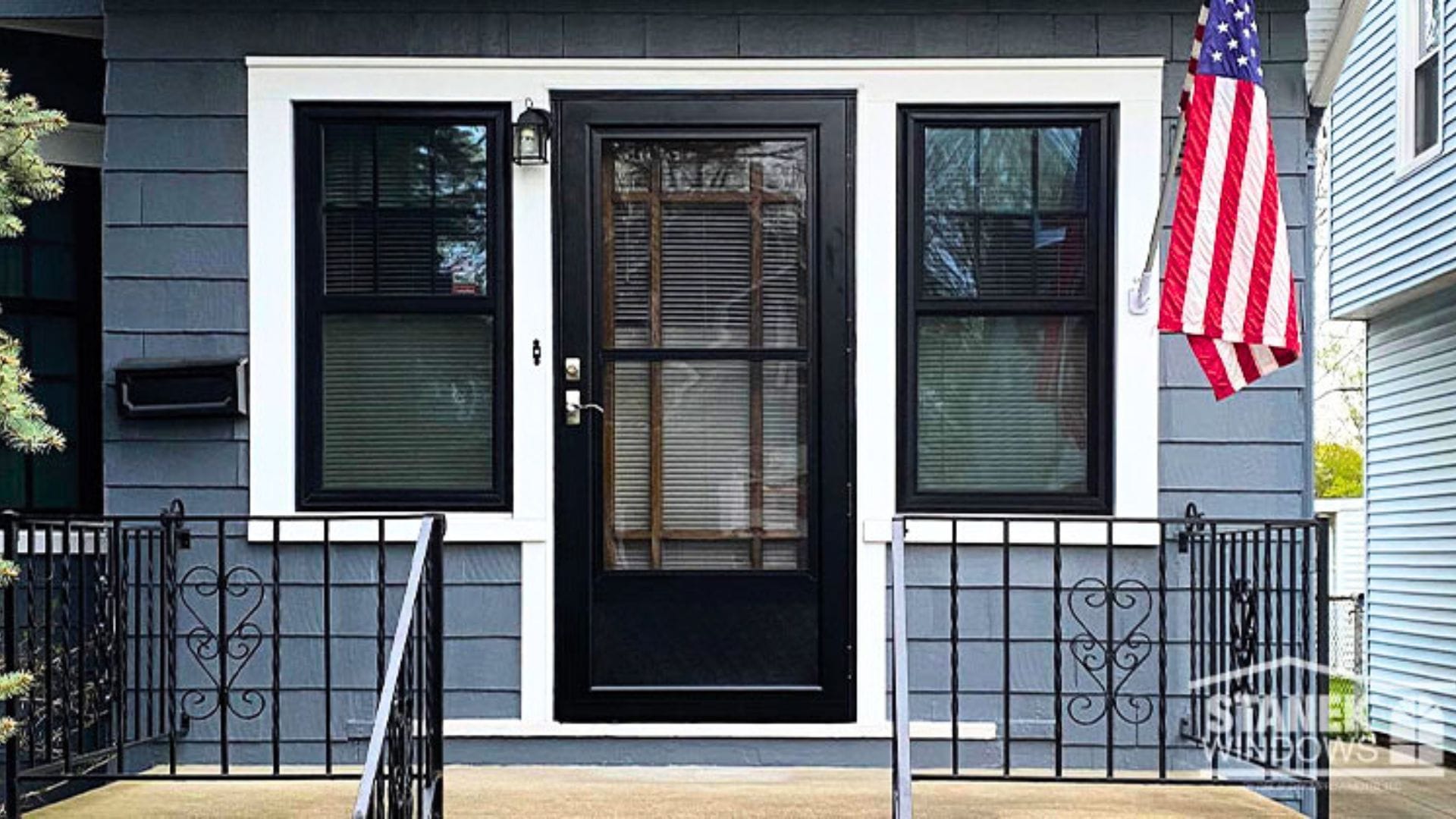
3- Floor-to-Ceiling Windows: More Light, Better Mood
Dark rooms make you feel tired and cramped. Floor-to-ceiling windows fill your room with natural light, making the space look larger and brighter. Studies show natural light boosts productivity by 15% and improves sleep quality.
You’ll need a structural engineer before installing large windows. Load-bearing walls require steel beams to support the weight above. The installation takes 2-3 days per window and costs $3,000-8,000 depending on size.
Natural light cuts electricity bills, but big windows can increase heating and cooling costs. Triple-pane glass helps, but expect energy bills to rise 10-20% without proper planning. South-facing windows need exterior shades or overhangs.
Privacy becomes tricky with floor-to-ceiling windows. Top-down bottom-up shades work well for living rooms. Bedrooms need blackout options like motorized shades or switchable glass film.
Building codes require safety glass below 18 inches from the floor. You’ll also need proper drainage and flashing to prevent water damage. Check local codes – some areas limit window-to-wall ratios for energy efficiency.
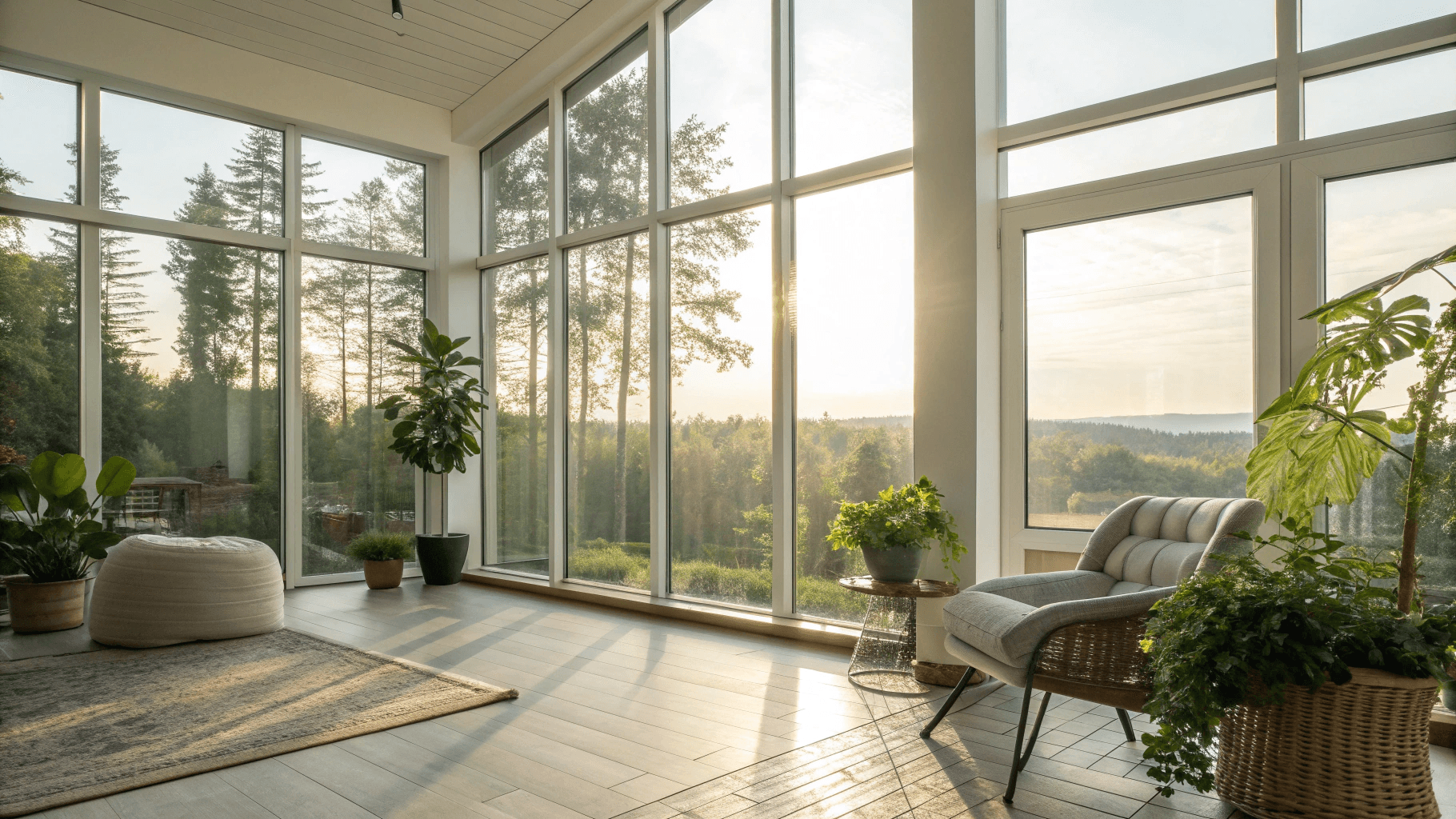
4- Corner Windows: Turn Dead Corners Into Design Gold
Corner spaces usually feel forgotten and cramped. Corner windows make these dead zones the star of your room. They create a wrap-around view that makes any space feel twice as big.
You need serious structural work for corner windows. The corner post gets removed, so steel beams must carry the load above. This requires permits and engineering plans that add $2,000-4,000 to your project cost.
The visual payoff is huge though. Corner windows in kitchens frame two different outdoor views while you cook. Living room corner windows create a cozy reading nook that feels like a treehouse. They work best in rooms where you spend lots of time.
Weather sealing is the biggest challenge with corner windows. Rain and wind hit from two directions at the corner joint. A proper installation with structural glazing tape stops leaks, but the cost is usually $8,000–15,000 for each corner.
These windows need custom manufacturing since no standard sizes exist. Plan 8-12 weeks for delivery after ordering.
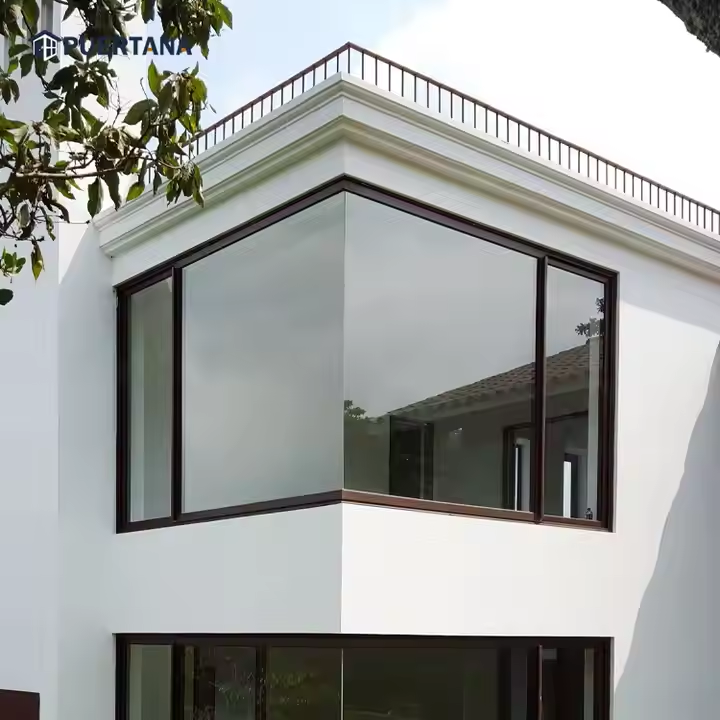
5- Minimalist Window Grilles: Clean Lines That Actually Look Good
Old-style window grilles can make modern homes look busy and old-fashioned. New geometric grilles use clean lines and simple patterns to add style without clutter. Think of single horizontal bars or simple grids instead of fancy, outdated designs.
Before, muntins divided glass into small panes because large glass sheets were expensive. Now, divided windows are for style, not need. Modern grilles focus on shapes like rectangles, squares, or single lines that frame your view neatly.
For 2025, the most popular patterns are single horizontal dividers, uneven grids, and large rectangles. These designs work best in contemporary and transitional homes. They add visual interest while keeping your outdoor view clear.
Window grilles can boost your home value by 3-5% when done right. They cost $200-800 extra per window depending on complexity. Simple patterns cost less than intricate designs.
Cleaning divided light windows takes more time than plain glass. Exterior grilles collect dirt and require scrubbing around each bar. Interior grilles between glass panes stay cleaner but can’t be accessed if they break.
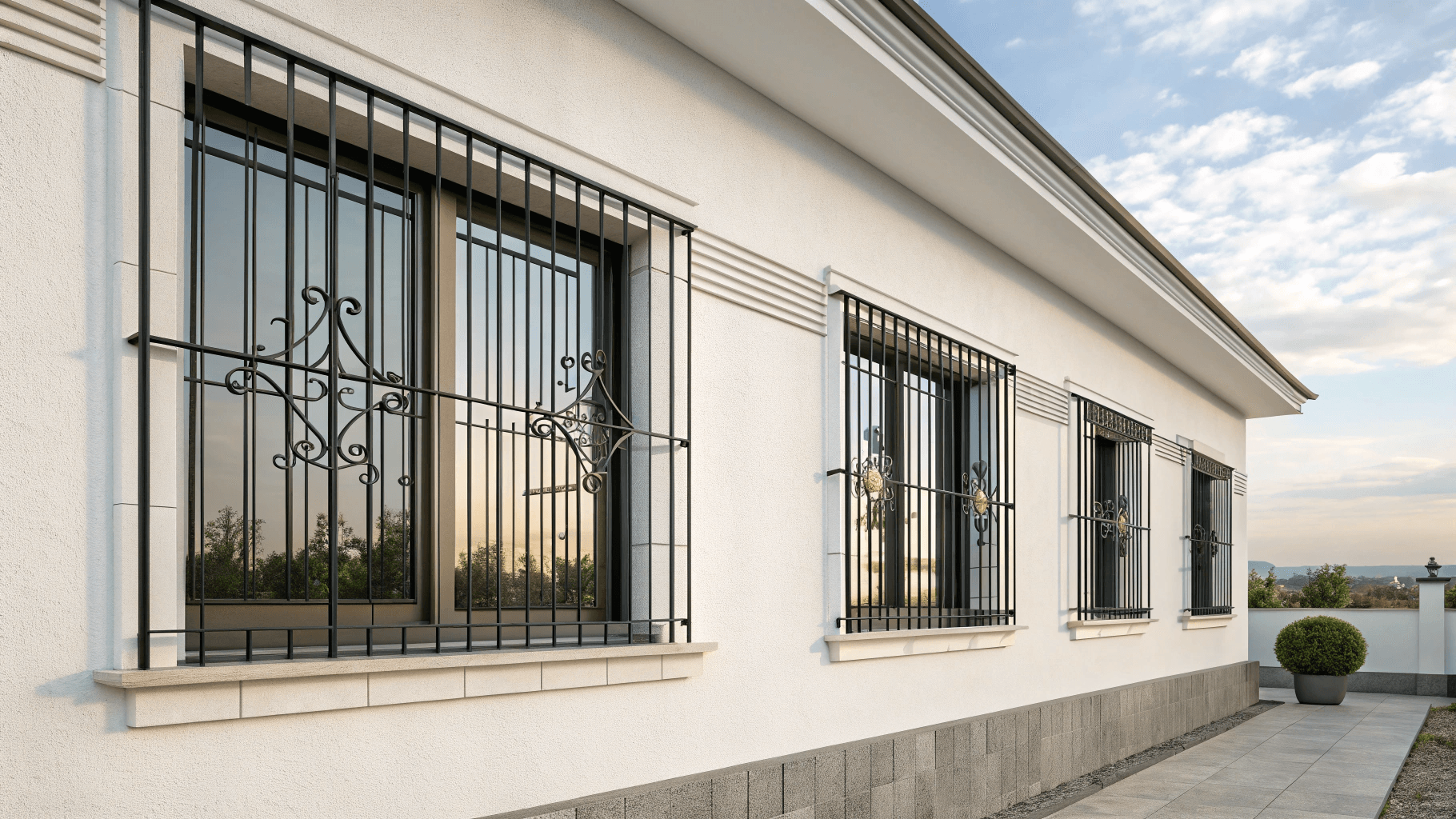
6- Multi-Slide Patio Door Systems: Your Wall Just Disappeared
Traditional patio doors block part of your opening, even when fully “open.” Multi-slide patio doors are becoming very popular because they let your indoor and outdoor spaces feel like one big room.
These doors stack panels to one or both sides, opening up to 75% of your wall. In 2024, the indoor-outdoor living market grew 23% as more homeowners want flexible spaces for entertaining. Standard sliding doors only open about 50% of the space.
Two main track systems dominate the market. Top-hung systems carry weight from above and slide smoother but cost more. Bottom-rolling tracks cost less but wear out faster with heavy use.
Security used to be weak on sliding systems. New multi-point locking systems secure at three spots along each panel. Some include smart locks that connect to your phone for remote monitoring.
Installation requires structural changes since you’re removing load-bearing wall sections. Expect $8,000-25,000 depending on opening size. Energy ratings match regular patio doors when closed.
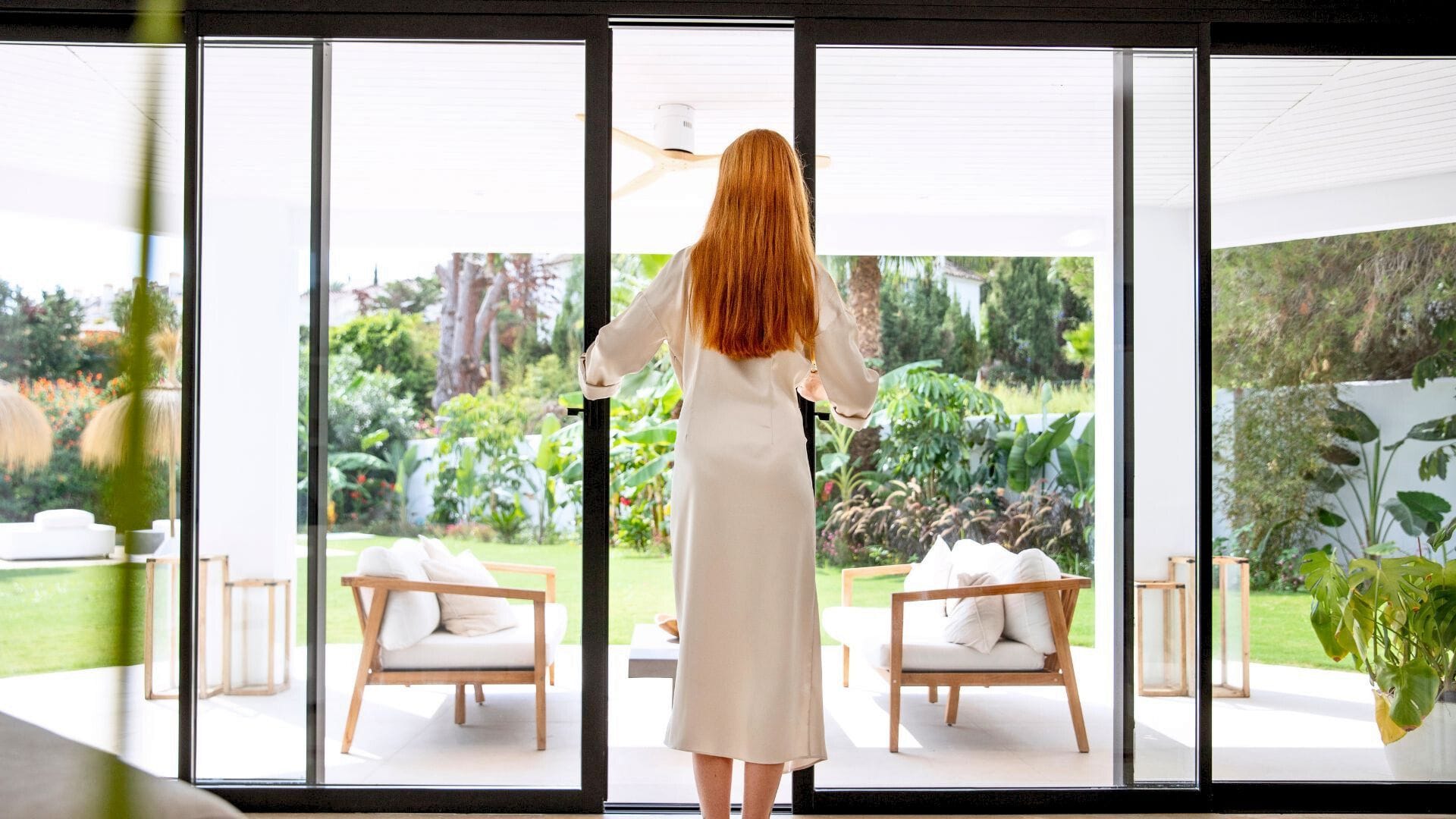
7- Arched and Curved Window Designs: Old Style, New Attitude
Square windows make homes look ordinary. Arched windows add instant character and make your house stand out. Modern curved designs keep the arch simple and elegant, without extra decoration.
In 2025, classical arches are getting a minimalist update. Clean lines and simple frames replace heavy stone surrounds. They work well on Mediterranean, transitional, and contemporary homes.
Modern farmhouse and Spanish revival homes show off arched windows beautifully. Large arched windows in living rooms become eye-catching focal points. In kitchens, arched windows frame garden views like living artwork.
Custom manufacturing makes arched windows expensive. Expect $2,000-5,000 per window compared to $800-1,500 for standard rectangular windows. Each arch gets built to your exact measurements since no standard sizes exist.
Window treatments get tricky with curved tops. Motorized cellular shades can follow arch shapes but cost $800-1,200 installed. Many homeowners skip treatments entirely and use decorative window film for privacy instead.
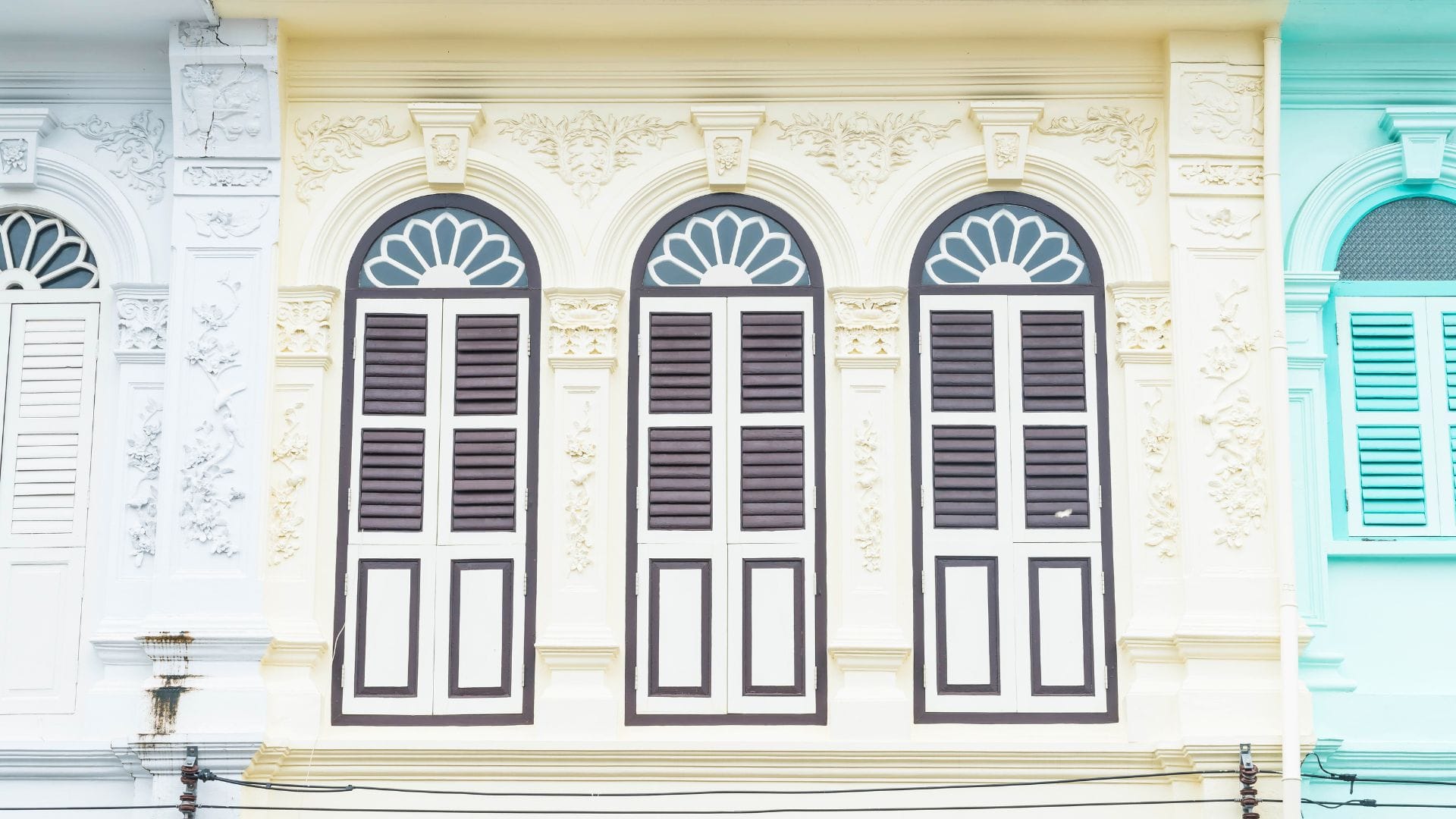
8- Integrated Window Planters: Bring Nature Inside Without the Mess
Indoor plants die because you forget to water them or they don’t get enough light. Window planters solve both problems by putting plants right where they get natural light and where you see them daily. Biophilic design research shows that visible greenery reduces stress and improves focus.
Built-in window planters need solid support since soil and water add serious weight. Each linear foot of planter holds 15-20 pounds when planted. Your window frame needs reinforcement or the sill will sag over time.
Choose plants that match your window’s light conditions. South-facing windows need heat-tolerant plants like succulents or herbs. North windows work better for ferns and low-light plants. Avoid plants that grow tall and block your view.
Waterproofing is critical for window planters. Use marine-grade sealant and install proper drainage holes that connect to exterior drains. Standing water will rot your window frame and create mold problems.
Installation costs $800-2,000 per window depending on size. You’ll save money on buying and replacing houseplants, plus get fresh herbs year-round.
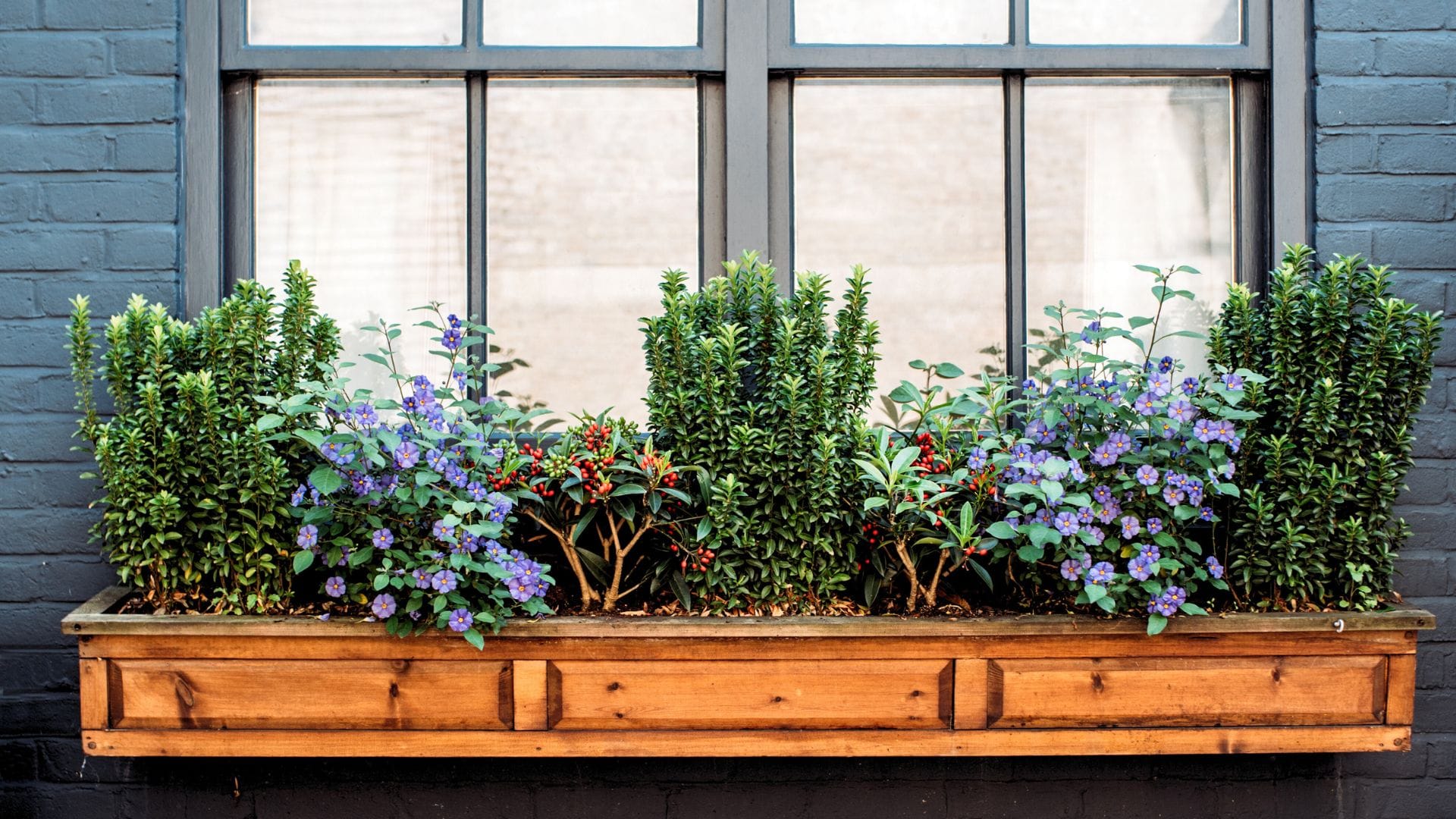
9- Mixed Window Shapes: Break the Boring Box Pattern
Rows of identical windows make homes look like office buildings. Mixed window designs use different shapes on the same wall to make the space look stylish and unique. For example, you can put a rectangle window with a circle, or a tall narrow window next to a wide one.
The key to successful contemporary window combinations is balance, not matching. Use one dominant shape (like rectangles) and accent with different shapes (circles or triangles). Keep the same frame color and material to tie everything together.
Some popular mixed window designs pair rectangular windows with small round ones. Another option is tall, narrow windows on the sides of a wide window. These styles look best in modern or transitional homes where creative designs make the space stand out.
Installation gets complex because each shape needs custom framing and different structural support. Round windows require special curved headers that cost $500-800 extra per opening. Mixed installations take 2-3 times longer than standard rectangular windows.
Expect to pay 30-50% more than standard rectangular windows. Installing three different window shapes in one room usually costs around $8,000–15,000. In comparison, standard windows for the same room cost about $5,000–8,000.
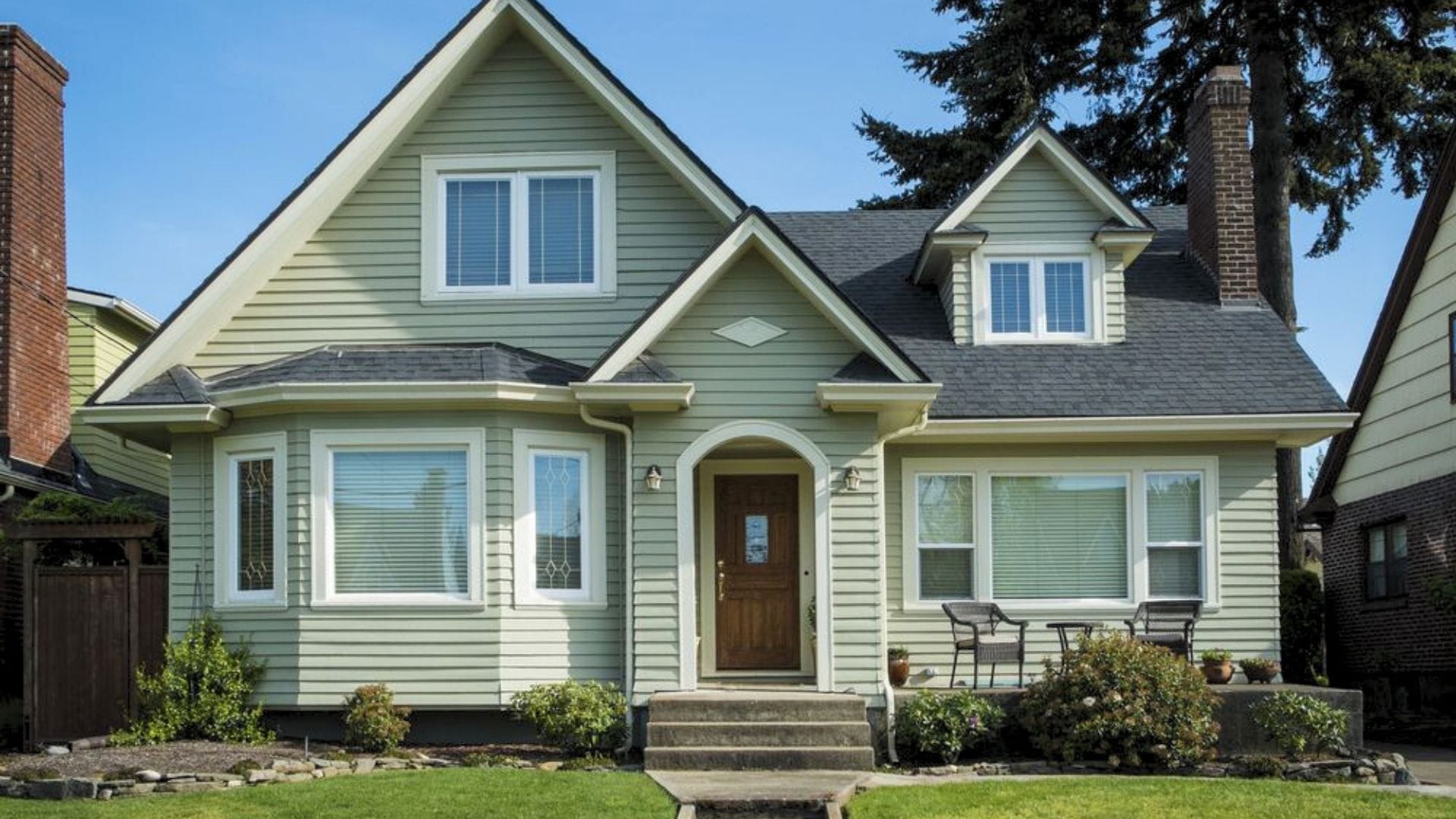
10- Oversized Single-Pane Picture Windows: One Giant View Beats Many Small Ones
Multiple small windows chop up your outdoor view into pieces. Picture windows give you a clear, wide view that makes a room feel much bigger and connects it to the outdoors. A single 8-foot-wide window looks more impressive than three small ones in the same spot.
Large windows need strong support because glass is heavy—about 13 pounds per square foot. Windows wider than 6 feet need steel headers or engineered beams. Your contractor should check the load-bearing needs before installing.
Big windows can make your home less energy-efficient. Large glass panels lose heat in winter and get hot in summer. Triple-pane glass and low-E coatings help, but your energy bills may still be 15–25% higher than with smaller, well-insulated windows.
Aluminum frames work best for big picture windows—they are stronger than vinyl and cheaper than wood. Fiberglass frames last the longest but cost about 40% more than aluminum.
Installation costs $3,000–8,000 per large window. Multiple smaller windows covering the same space cost $2,000–4,000. One big window usually costs less overall and creates a bigger visual impact.
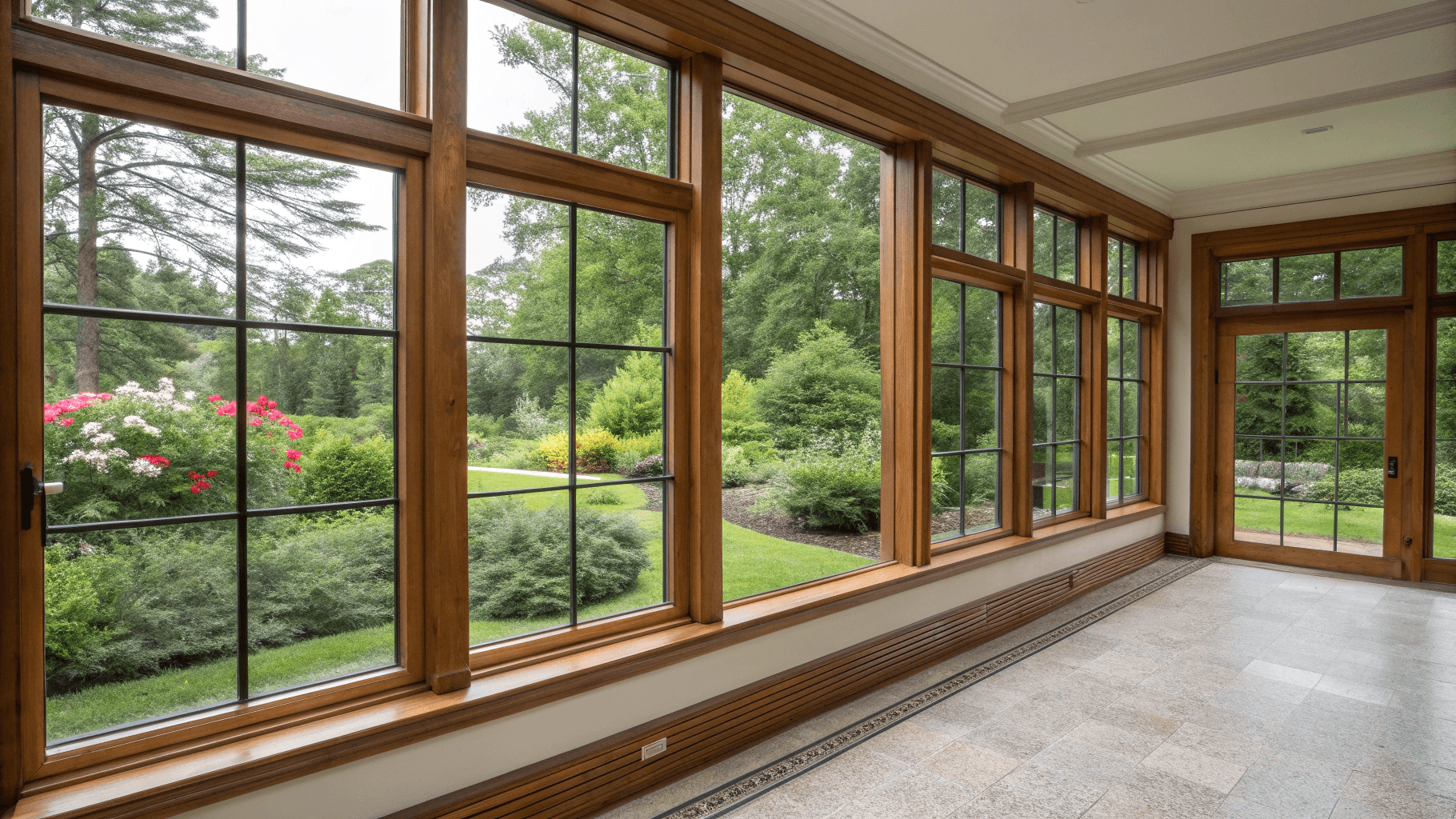
11- Window Walls and Glass Facades: When Your Whole Wall Becomes a Window
Traditional walls with small windows can make rooms feel closed off from nature. Window walls replace whole walls with floor-to-ceiling glass, opening up your space and connecting indoors with outdoors. They make rooms feel spacious like an outdoor pavilion while still keeping the temperature controlled.
Structural glazing systems attach glass panels directly to the building frame instead of fitting them into regular window openings. The glass becomes part of the building itself. This setup needs structural engineers and skilled contractors who understand curtain wall systems.
Thermal performance is important with so much glass. High-performance glazing with low-E coatings and gas fills reduces energy loss. Even with the best glass, heating and cooling costs may rise 25–40% compared to regular walls.
Cleaning window walls needs special tools because the top parts aren’t reachable from inside. Plan on $2–4 per square foot per year for professional cleaning. Some systems have built-in tracks to make cleaning easier.
Installation costs $150–300 per square foot, compared to $50–80 for standard walls with windows. A 200-square-foot window wall usually costs $30,000–60,000 installed.
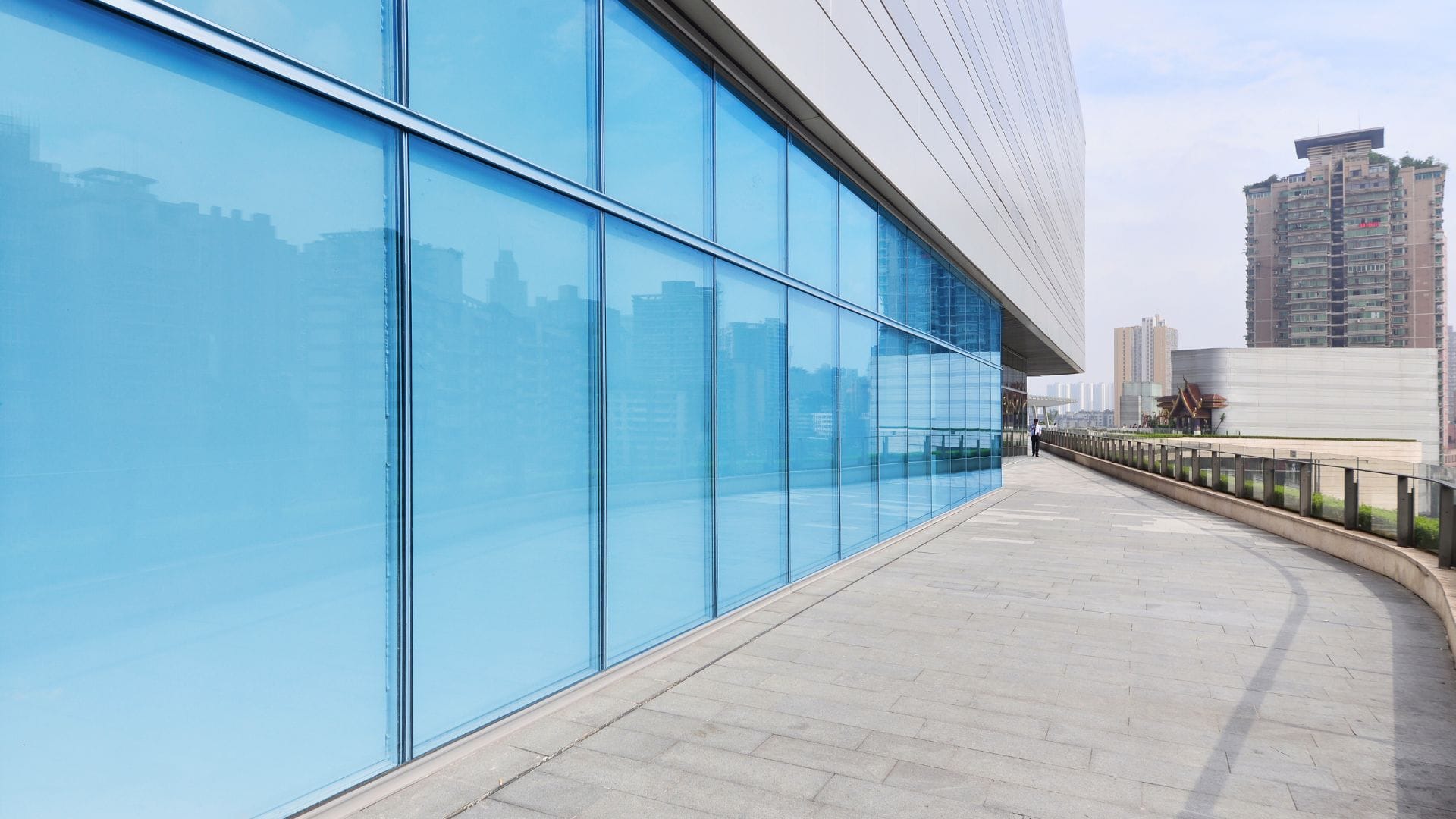
12- Automated Window Treatments: Your Blinds Just Got Smarter
Sometimes you forget to close the blinds when leaving home. This lets sunlight fade your furniture and raises cooling costs. Automated window blinds fix this by opening and closing on a set schedule. They save energy and protect your home even when you’re not there. Smart blinds also connect to your phone so you can control them from anywhere.
There are two main motor types. Battery-powered motors are simple to install since they don’t need wiring, but you must recharge them every 6–12 months. Hard-wired motors don’t need charging, but installation requires electrical work, which can cost an extra $200–400 per window.
Energy savings happen automatically. Blinds close during hot afternoons to block heat and open in the morning for natural light. Smart systems even learn your routine, cutting heating and cooling bills by 10–15%.
Installation is simple for most windows. Standard rectangular blinds take about 30 minutes each. Arched or special-shaped windows need custom motors, which cost double.
Basic automated blinds cost $300–800 per window, plus $100–200 if you connect them to a smart home system. Motors usually last 8–12 years with little upkeep.
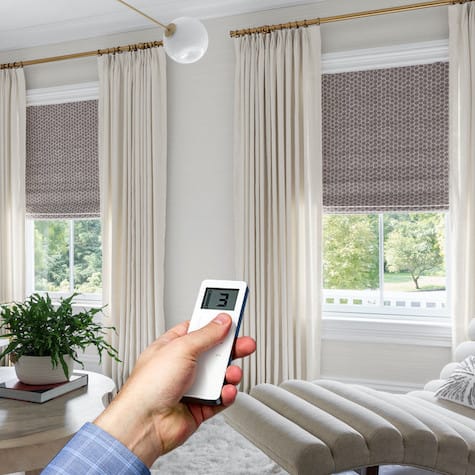
13- Colored and Tinted Glass Options: Windows With Personality
Clear glass windows look boring and let in harsh glare that fades furniture. Colored glass windows give your home character and also help with heat and privacy. Bronze, gray, and blue tints are popular in 2025 because they match modern exterior colors.
Tinted windows do more than look good. Bronze glass cuts heat gain by 30% while keeping natural light. Gray tints reduce glare on computer screens without making rooms feel dark. Blue glass creates calming effects that work great in bedrooms and home offices.
Popular 2025 colors include warm bronze, charcoal gray, and ocean blue tints. These custom glass options work best on contemporary and transitional homes. Avoid dark tints on north-facing windows since they’ll make rooms too dim.
Colored glass costs $100-300 extra per window depending on tint darkness and color complexity. Custom colors like green or purple cost more than standard bronze or gray options.
Check building codes before ordering colored glass. Some areas limit tint darkness for fire safety. HOAs often restrict glass colors, so get approval in writing before installation.
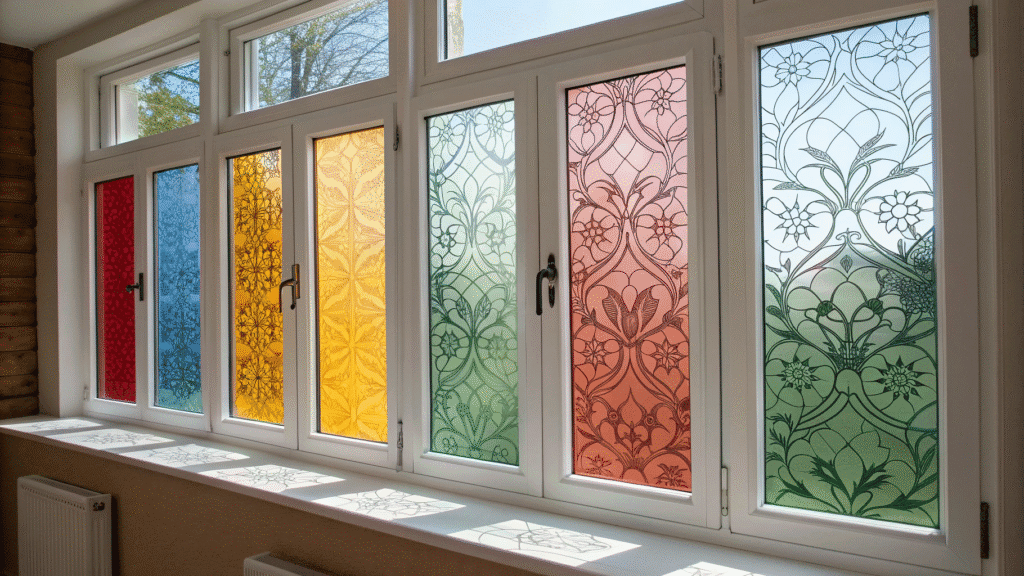
Conclusion
These window design trends in 2025 will change how your home looks and feels. The five biggest trends are black window frames, floor-to-ceiling windows, smart glass, triple glazing, and multi-slide patio doors. Each one solves real problems while adding style.

For the best value, start with black frames and triple glazing. Black frames cost only 10–15% more than white but can increase your home’s value by 3–5%. Triple glazing saves energy and can pay for itself in 8–12 years, while making your home more comfortable.
Smart glass and floor-to-ceiling windows create the biggest wow factor but need a bigger budget. Multi-slide patio doors are perfect if you entertain often and have outdoor space.
Don’t do window projects alone. Modern windows need proper installation to last and work well. Get quotes from three certified window contractors in your area. Check their recent work and references before choosing.
Your dream windows are closer than you think. Start planning today.

